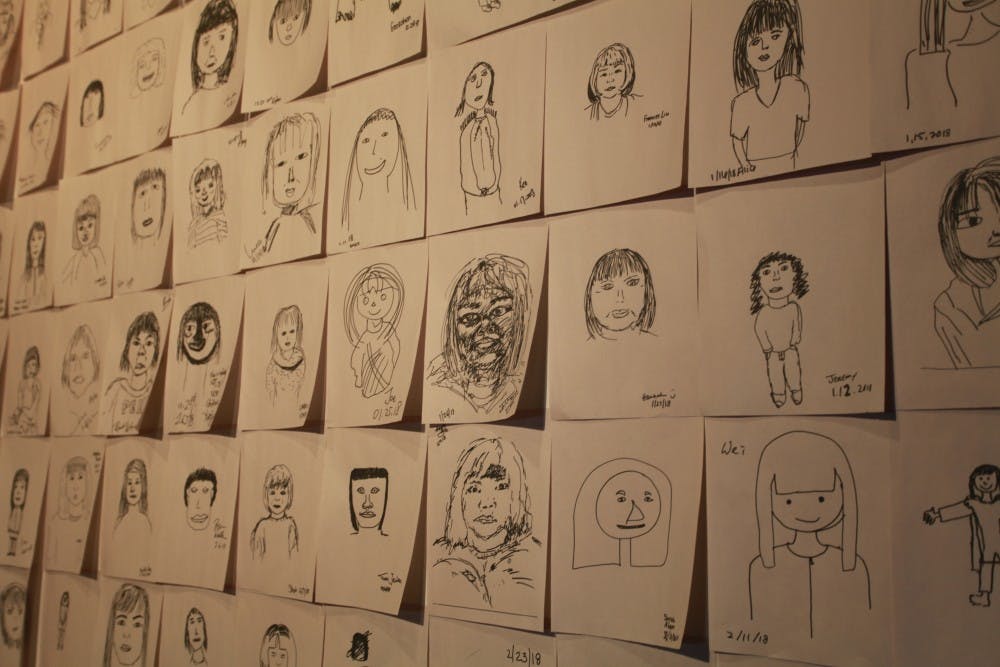Art installations at Penn tend to be ephemeral. Installed one day, taken down the next week, if not the next day. Or at least this is largely the case in the Fine Arts undergraduate program, such as in Helen Nie’s exhibit challenging the conventions of OCR, Jason Barr and Linda Lin’s reimagination of Benjamin Franklin as a woman, and Jake Welde and Izzy Korostoff’s gingerbread replica of the Fisher Fine Arts Library. But for graduate students, the story is a little different. With access to local galleries in Philadelphia, graduate students in the arts have the opportunities to curate, install, and showcase their work in exhibitions.
This access to such occasions is made possible by Penn’s departments, specifically the Incubation Series program, a “collaboration between students in the Fine Arts and History of Art graduate programs at the University of Pennsylvania. The series aims to showcase the work of MFA students in focused and conceptually rigorous exhibitions, while also offering an opportunity for art history graduate students to expand their curatorial practices.” On the current exhibit of the program is Double Vision, curated by Olivia Dudnik, a second–year MA, and Jeffrey Katzin, a third–year PhD student, both studying art history.
The title of Double Vision speaks to different ways of seeing. With the unprecedented scale of technology and rate of growth, there’s now this whole other mode of seeing through technology. This is what constitutes the double vision: “a relationship to reality built in part upon our own immediate experiences, but also upon highly mediated connections to parts of the world that we have never actually seen with our own eyes.” Given this, the exhibit features four artists—Junyuan Feng, Adrienne Hall, Jiaqi Pan, and Zoya Siddiqui—all of whom address this second vision through surveillance, self–image, state power, cybernetic connectivity, and personal memory in a collective society.

Walking into the exhibit is first a grid panned out on the wall of what appears to be portraits. Jiaqi’s "27" examines an artist’s self–perception through photography and drawing. Each drawing is actually made by a stranger and how they see Jiaqi. No two is the same, revealing the variant external perceptions that mold the internal perceptions of the self. Separated by a partition is a projection of a video: "In the Park," which consists of long stills describing the Beijing World Park. The park itself was an attempt to reimagine the world as to reenter it after the Cold War, an attempt at double vision.
With these two pieces set up, the remainder of the art were installed according to how they interact with another. While Olivia and Jeffrey spaced the pieces as to give meaning to the exhibit as a whole, the experience of the exhibit, like most presentations of art, is left up to the audience. It’s supposed to be an experience that is “empowering, so that viewers feel encouraged to interpret the show on their own,” as Jeffrey puts it. The different themes stemming from the pieces prompt people to think, giving suggestive answers, but also leaving room for people to bring in their own thoughts. Even in the wall labels, one can see how power is given to the audience: they’re minimal, only with the most basic information of title, artist name, date, and material, so as to not distract the audience from the piece itself.
"Double Vision" will be on display from now until March 31 at the FJORD Gallery on 1400 North American Street, Suite 105. It is open on Saturdays from 2–6 p.m. and by appointment.







